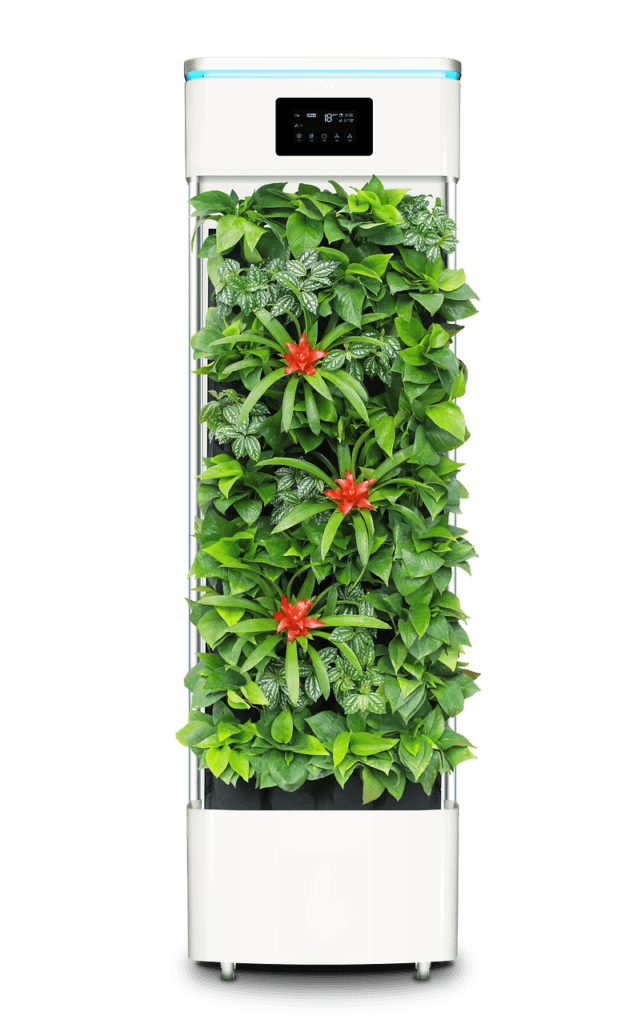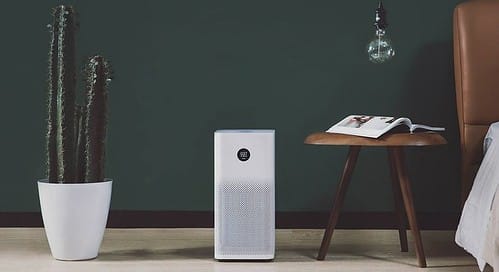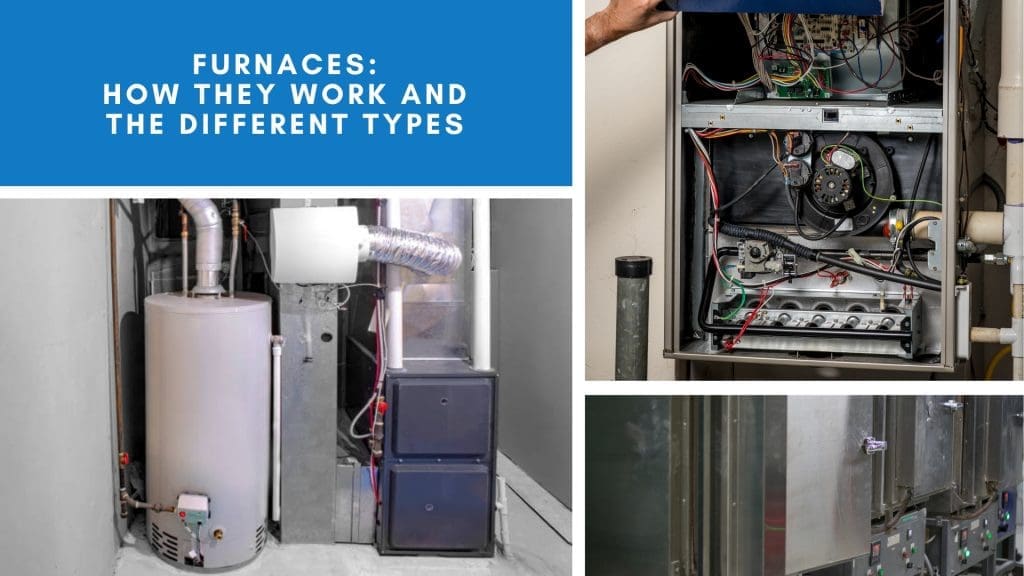Spring is a season of renewal. Trees bloom, flowers blossom, and the air seems fresher. But for many, it’s also a time of sneezing, congestion, and discomfort.
Why? The answer is pollen.
Pollen, a common spring allergen, can trigger allergies and exacerbate asthma symptoms. It’s virtually everywhere during spring, making it hard to avoid. But what if you could significantly reduce your exposure to pollen, right in your own home?
Enter air purifiers.

Air purifiers are devices designed to cleanse the air, removing various pollutants, including pollen. They can be a game-changer for those suffering from allergies or asthma, especially during the pollen-heavy spring season.
But how exactly do they work? And what are the benefits of using an air purifier?
In this guide, we’ll delve into the top benefits of using air purifiers for spring. We’ll explore how they can alleviate allergies, improve respiratory health, and enhance your overall well-being.
Whether you’re a small business owner, a work-from-home professional, or a stay-at-home mom, this guide is for you. Let’s discover how air purifiers can make your spring season healthier and more enjoyable.
Understanding Air Quality and Allergens in Spring
Spring brings joy, but it also brings allergens. As trees and flowers release pollen, air quality changes. Indoor environments can suffer too, with pollen sneaking in through windows and doors.
Poor indoor air quality can significantly impact comfort and health. Here’s what commonly affects it during spring:
- Pollen: Microscopic particles from trees, grasses, and flowers.
- Dust: Often stirs up more during spring cleaning activities.
- Pet Dander: Increases as pets shed their winter coats.
- Mold Spores: Thrive in damp spring weather and spread indoors.
With so many airborne threats, managing indoor air quality becomes crucial, especially if you suffer from respiratory issues. Air purifiers can help by trapping these particles. They assist in maintaining a cleaner, healthier living space.
Understanding these factors is the first step towards a healthier home. Grasping how spring allergens impact health helps you take proactive steps in reducing risks. Let’s dive deeper into these links.
The Link Between Spring Allergens and Respiratory Health
Respiratory health can be heavily influenced by allergens. Spring allergens, especially pollen, are common culprits. They irritate the airways, causing sneezing, itching, and congestion.
For people with pre-existing conditions like asthma, these allergens can be more than a mere nuisance. They may trigger serious asthma flare-ups. These flare-ups cause wheezing and difficulty breathing, impacting daily activities.
Air purifiers play a key role here. They help filter out allergens, reducing their presence indoors. As a result, they can ease breathing and lessen allergy symptoms, offering relief.
How Pollen Affects Asthma and Allergy Sufferers
Pollen is a severe irritant for many asthma and allergy sufferers. Its microscopic size allows it to infiltrate homes easily, even when windows are closed. Once inside, pollen is tough to remove without proper intervention.

For people with asthma, inhaling pollen can cause the airways to swell and narrow. This leads to coughing, wheezing, and shortness of breath. These reactions can be particularly severe during high pollen seasons.
Allergy sufferers also experience intense symptoms. These can include watery eyes, runny noses, and persistent sneezing, making daily life uncomfortable. An air purifier can significantly mitigate these effects by reducing indoor pollen levels, leading to improved health and comfort.
The Science Behind Air Purifiers and Allergen Removal
Air purifiers are marvels of modern technology designed to improve air quality. They function by drawing in air, filtering it, and then releasing cleaner air back into the room. The effectiveness of air purifiers depends heavily on their filtering mechanisms.
Two common types of filters are HEPA and activated carbon. These filters have specific roles in removing allergens and pollutants from the air. Let’s explore these further:
- HEPA Filters: Capture particles like pollen, dust mites, and pet dander.
- Activated Carbon Filters: Absorb odors and volatile organic compounds (VOCs).
- UV-C Light Technology: Inactivates certain pathogens for added safety.
These components work together to trap harmful particles, reducing their presence indoors. Scientific studies support the air purifier’s ability to remove allergens effectively. By understanding these technologies, you can choose an air purifier suited to your needs.
HEPA Filters and Their Role in Capturing Allergens
HEPA filters are the gold standard in air purification. They are incredibly efficient, capturing up to 99.97% of particles as small as 0.3 microns. This includes pollen, dust mites, and even pet dander.
The design of HEPA filters consists of multiple layers of fine mesh. As air passes through, particles stick to the fibers. This creates a cleaner, healthier indoor environment by significantly reducing allergen levels.
For those with allergies or asthma, HEPA filters can make a considerable difference. By filtering out common airborne irritants, they help ease symptoms and improve overall respiratory health. Investing in an air purifier with a HEPA filter is a smart choice for anyone wanting to breathe easier indoors.
The Benefits of Activated Carbon Filters
Activated carbon filters complement HEPA filters by tackling pollutants HEPA can’t capture. They are particularly effective at absorbing odors and VOCs emitted by household products. These filters use a sponge-like structure, allowing them to trap gases and chemicals.
Using activated carbon, these filters neutralize odors from cooking, pets, or smoke. This not only improves air quality but also enhances overall home comfort. Such a feature is particularly valuable in smaller spaces where odors can linger.
For asthma sufferers, removing VOCs is crucial. These compounds can irritate the respiratory system, making breathing difficult. Activated carbon filters help create a less irritating environment, promoting better health and well-being. Integrating this type of filter into your air purification strategy can have significant health benefits.
Top Air Purifier Benefits for Spring Allergy Relief
Spring brings beauty but also a high pollen count. Many face intensified allergy symptoms during this season. Sneezing, itchy eyes, and congestion can disrupt daily activities. Air purifiers provide effective relief by targeting these allergens indoors.
Reducing Pollen in Your Indoor Environment
Pollen from trees and flowers is a common spring allergen. It can easily enter homes through open doors and windows. Once inside, pollen settles on surfaces and circulates in the air. This can worsen symptoms for allergy sufferers.
Air purifiers work to catch these particles before they settle. HEPA filters in particular are adept at removing airborne pollen. By continuously cycling and cleaning the air, these devices help create a pollen-free zone indoors.
When used properly, air purifiers can lower indoor pollen levels significantly. This results in fewer allergy symptoms and a more comfortable living environment. Installing one in your main living areas can provide noticeable relief during peak pollen seasons.
Alleviating Asthma and Breathing Problems
For those with asthma, spring can be challenging. Pollen is a known trigger for asthma flare-ups. This makes managing air quality indoors crucial for asthmatics. Air purifiers can be a valuable ally in this endeavor.
They reduce the number of irritants present in the air. Not only do they capture pollen, but they also tackle dust and other small particles. This reduction in indoor pollutants helps lessen the frequency of asthma attacks.
The key is to use a high-quality air purifier consistently. By maintaining cleaner air, individuals with asthma can breathe easier. This not only alleviates immediate symptoms but also contributes to long-term respiratory health.
Enhancing Sleep Quality for Better Health
Poor air quality can disrupt sleep, especially for those with allergies or asthma. Breathing in allergens at night leads to frequent waking and discomfort. Using an air purifier in your bedroom can dramatically improve the quality of your rest.
By removing allergens, air purifiers help keep your nasal passages clear. This leads to reduced congestion and fewer interruptions to sleep. Cleaner air facilitates deeper, more restful sleep, crucial for overall health.
A good night’s sleep boosts the immune system and energy levels. It can also improve productivity and mood. For those with allergies or asthma, this means waking up refreshed and better equipped to face the day. Investing in an air purifier for your bedroom is a step toward healthier, more restful nights.
Air Purifiers: A Tool for Healthier Living Spaces
Air purifiers go beyond allergy relief. They are essential for maintaining a healthier home environment. By removing various airborne pollutants, they contribute to overall well-being. This is especially important in urban areas where air quality might be compromised.
Notably, air purifiers tackle more than just pollen. They can eliminate pet dander, dust mites, and even certain bacteria. This makes the home safer for everyone, not just allergy sufferers. The benefits extend across multiple aspects of daily life, enhancing comfort and quality of living.
An air purifier can be an ally in stress reduction, too. Knowing the air is cleaner brings peace of mind to homeowners. This is particularly valuable in homes with small children, elderly family members, or individuals with respiratory issues.
Consider these air purifier benefits for healthy living:
- Removes airborne allergens like pollen and dust mites
- Captures pet-related allergens
- Reduces bacteria and viruses in the air
- Helps neutralize smoke and harmful volatile organic compounds (VOCs)
Investing in a good air purifier can transform the living space. Cleaner air is a cornerstone of a healthier home. It supports better health for all occupants, regardless of age or health condition.
Protecting Vulnerable Family Members
Air quality is crucial for vulnerable individuals. Children, the elderly, and those with respiratory diseases are particularly at risk. Their immune systems are less capable of dealing with pollutants. Hence, they benefit greatly from purified air.
Air purifiers help minimize this risk. By reducing harmful particles, they create a safer environment. This is particularly important for family members with conditions like asthma or chronic bronchitis. Cleaner air means fewer triggers and a better quality of life.
Using air purifiers is a proactive way to protect loved ones. It’s not only about comfort but also about safeguarding health. Investing in air purification technology is a smart choice for families wanting to ensure their home is safe for all.
Complementing Cleaning Routines for a Dust-Free Home
Maintaining a spotless home is a top priority for many. Yet, no amount of cleaning can remove all airborne dust. This is where air purifiers step in. They complement regular cleaning routines, capturing dust before it lands on surfaces.
Regular use of air purifiers helps keep homes looking pristine. They prevent the accumulation of dust on furniture, floors, and electronics. Cleaner air supports a cleaner home, reducing the need for constant dusting.
Moreover, air purifiers remove particles that settle faster than traditional cleaning can manage. This means less work for homeowners striving for dust-free environments. Combined with regular cleaning, they create a comfortable and inviting living space. Embracing air purification is a practical way to enhance your cleaning strategy and overall home hygiene.
Choosing the Right Air Purifier for Your Needs
Selecting an air purifier involves more than just a trip to the store. Understanding the different types and sizes available is key. Each home has unique needs based on its size and occupants’ sensitivities.

The first step is assessing the space. Larger areas may require bigger units. However, some models efficiently cater to small spaces. It’s crucial to select the right size to ensure effectiveness and efficiency.
Consideration of specific needs is important. For instance, those with pets might prioritize purifiers with HEPA filters. Meanwhile, individuals sensitive to odors might look for activated carbon filters. Understanding these options helps make an informed decision.
Here’s a quick guide to help you:
- Room Size: Choose an air purifier based on the area it covers.
- Filter Type: Look for HEPA for allergens; activated carbon for odors.
- Specific Needs: Consider extra features like UV light for germs.
- Noise Level: Select a model that won’t disrupt peace at home.
Invest time in choosing an air purifier that matches your home’s needs. This careful selection ensures efficiency in improving indoor air quality.
Understanding Air Purifier Sizes and Types
Air purifiers come in various sizes. Each design caters to specific spaces. For small rooms, compact models suffice. They effectively purify the air without taking much space. These are ideal for bedrooms or home offices.
In contrast, larger spaces call for more powerful purifiers. Tower models or console units handle larger volumes of air. They are best suited for living rooms and open-plan areas. This ensures comprehensive air cleaning across the home.
Beyond size, the type of purifier matters. Options include HEPA and activated carbon filters, each with distinct benefits. Ionizers, while less common, can also be effective. Understanding these types helps in choosing the right fit for any home environment.
Maintenance Tips for Optimal Air Purifier Performance
To maximize an air purifier’s longevity and effectiveness, regular maintenance is key. This involves more than just dusting off the unit. Proper upkeep ensures your purifier works efficiently for a healthier home.
Begin with the filters. Regularly checking and replacing filters is crucial. HEPA filters typically need changing every 6-12 months. Activated carbon filters should be replaced as per the manufacturer’s instructions. Failing to do so can hinder the purifier’s performance.
Next, clean the exterior and vents. Dust and debris can accumulate, reducing efficiency. Wiping down these areas with a damp cloth can help maintain unobstructed airflow.
Lastly, follow the manufacturer’s guidelines. Each model has its specific maintenance needs. Routine care keeps your purifier running smoothly and extends its lifespan. Keeping these tips in mind ensures your air purifier consistently delivers cleaner air to your home.
Integrating Air Purifiers into Your Allergy Management Plan
Spring is beautiful but challenging for allergy sufferers. Incorporating air purifiers into an allergy management plan can offer relief. Purifiers work alongside other strategies to tackle allergens effectively.
Consider air purifiers as part of a holistic approach. They are a valuable tool in reducing indoor allergens. When used with other strategies, they enhance the living space quality.
Here’s how to integrate air purifiers into your allergy management plan:
- Daily Cleaning: Regular dusting and vacuuming complement purifier use.
- Wash Fabrics Often: Bedding and curtains should be washed weekly to remove allergens.
- Control Humidity: Keep humidity levels in check to prevent mold growth.
- Choose Hypoallergenic Products: Use hypoallergenic mattresses and pillow covers.
This integration doesn’t require drastic changes. Simple adjustments can significantly enhance indoor air quality. A comprehensive approach ensures a comfortable and allergen-free home.
Combining Air Purifiers with Other Allergy Reduction Strategies
While air purifiers effectively clean the air, they perform best when combined with other practices. Daily cleaning habits can significantly augment their benefits. Regular vacuuming and dusting limit dust and allergen accumulation.
Managing humidity is also crucial. High moisture levels can lead to mold, exacerbating allergies. Consider using a dehumidifier alongside your air purifier. This combination tackles both air pollutants and moisture effectively.
Another strategy involves using hypoallergenic bedding. Dust mites thrive in beddings, worsening allergies. Choosing the right bedding reduces exposure significantly. Together with an air purifier, these strategies form a robust defense against allergens.
The Long-Term Health Benefits of Using Air Purifiers
Air purifiers offer more than immediate relief; they contribute to long-term wellness. Continuous use can lessen the frequency and severity of allergy symptoms. Cleaner air leads to fewer respiratory irritations and overall improved health.
Beyond reducing allergens, purifiers also tackle pollutants. This includes volatile organic compounds (VOCs) and smoke, common in urban settings. By filtering these out, air purifiers help prevent chronic respiratory problems.
Additionally, families with sensitive members benefit greatly. Children and the elderly, particularly, experience fewer health issues. Over time, the investment in an air purifier pays off with enhanced life quality. Cleaner air supports better focus, sleep, and overall comfort, promoting a healthier lifestyle.
Conclusion: Embracing the Spring Season with Cleaner Air
Spring brings fresh beginnings and vibrant blooms. However, it can also bring sneezes and congestion from allergies. Embracing this season with cleaner air can transform your home into an allergy-free sanctuary.
Integrating air purifiers into your home not only mitigates allergens but also promotes overall well-being. Cleaner air is a foundation for a healthier, more enjoyable spring season. With the right tools and strategies, you can fully embrace the beauty of spring.
Encouraging Proactive Indoor Air Quality Management
Taking proactive steps toward indoor air quality management is essential. With spring’s arrival, allergens increase and can impact home life. An intentional approach to air quality can help mitigate these issues significantly.
Air purifiers are a key component of this proactive approach. They continuously clean the air, reducing the risk of respiratory problems. By acting before issues arise, you can ensure a healthier environment for everyone at home.
Final Thoughts and Recommendations
In conclusion, investing in air purifiers is a wise decision for spring. They offer countless benefits, from easing allergy symptoms to enhancing sleep quality. Consider them a worthy investment for health and comfort.
As you prepare for spring, make air purifiers a priority in your home. Choose the right model for your needs, and remember, regular maintenance ensures they work effectively. Enjoy the spring season with peace of mind, knowing your air is clean and fresh.
Frequently Asked Questions (FAQ)
- What size air purifier do I need for my home?The size of the air purifier you need depends on the area you want to cover. Measure the room dimensions and choose a purifier that is rated for that square footage to ensure optimal performance.
- How often should I replace the filters in my air purifier?HEPA filters typically need to be replaced every 6-12 months, while activated carbon filters should be changed according to the manufacturer’s recommendations. Regularly checking the filters will help maintain the purifier’s efficiency.
- Can air purifiers help with allergies?Yes, air purifiers can significantly reduce allergens in the air, such as pollen, dust mites, and pet dander. When integrated into a comprehensive allergy management plan, they can provide relief for allergy sufferers.
- Are there air purifiers that also reduce odors?Yes, many air purifiers come with activated carbon filters specifically designed to absorb odors. If odor control is a priority, look for models that include this feature.
- Do air purifiers make noise?The noise level of air purifiers varies by model. Some are designed to operate quietly, making them suitable for bedrooms or offices. Check the product specifications for decibel ratings to find a model that meets your noise preferences.


